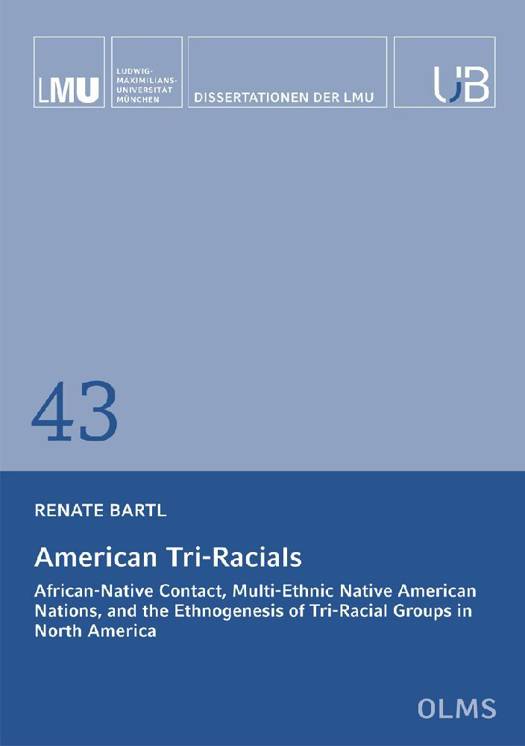
- Afhalen na 1 uur in een winkel met voorraad
- Gratis thuislevering in België vanaf € 30
- Ruim aanbod met 7 miljoen producten
- Afhalen na 1 uur in een winkel met voorraad
- Gratis thuislevering in België vanaf € 30
- Ruim aanbod met 7 miljoen producten
Zoeken
American Tri-Racials
African-Native Contact, Multi-Ethnic Native American Nations, and the Ethnogenesis of Tri-Racial Groups in North America
Renate Bartl
€ 36,45
+ 72 punten
Omschrijving
This book presents an ethno-historical overview on the contact situation of Native Americans, Europeans, and Africans in North America. In particular, it discusses the ethnogenesis of African-Indigenous and tri-racial groups in the eastern USA. Described in detail is the situation in Louisiana and Texas, with a discussion of the specific social, cultural, and legal factors, that framed the contact and interaction of Native Americans, African Americans, Free Persons of Color, and Europeans in these states. A theoretical frame is provided explaining the formation of a collective ethnicity and culture in African-Native and tri-racial groups, by creating shared group histories, genealogies, migration stories, ethnic identities, etc. Another focus of this book is on the application of the term "Indian" by African Americans and Persons of Color as a racial category for self-identification. It is demonstrated, how African Americans and Persons of Color switched into the racial category "Indian" to evade segregation, discrimination, and enslavement, and retain a status as "free" persons.
Specificaties
Betrokkenen
- Auteur(s):
- Uitgeverij:
Inhoud
- Aantal bladzijden:
- 500
- Taal:
- Engels
- Reeks:
- Reeksnummer:
- nr. 43
Eigenschappen
- Productcode (EAN):
- 9783487161686
- Uitvoering:
- Paperback
- Afmetingen:
- 150 mm x 210 mm
- Gewicht:
- 654 g

Alleen bij Standaard Boekhandel
+ 72 punten op je klantenkaart van Standaard Boekhandel
Beoordelingen
We publiceren alleen reviews die voldoen aan de voorwaarden voor reviews. Bekijk onze voorwaarden voor reviews.








